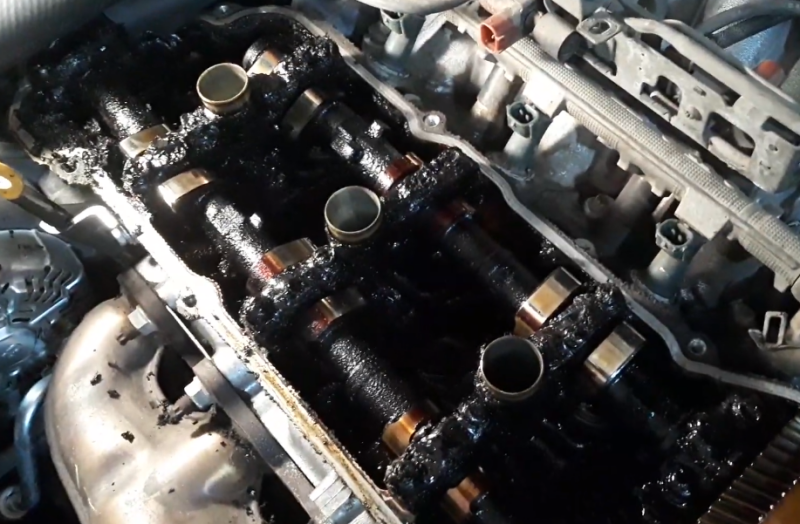In the modern automotive world, technology is constantly improving, bringing with it innovation. One of the latest “trends” is engine decarbonization using hydrogen. This method promises to quickly and effectively clear deposits, improve performance and reduce fuel consumption. But is this really so?
There are different opinions on this issue. While some believe that such technology can quickly remove deposits from the engine, bypassing complex processes, others argue that this is an unfounded deception. Let's take a deeper dive into the essence of the technology, find out how it works, what benefits it brings to car owners, and identify situations in which performing this procedure is an essential requirement.
What is hydrogen decarbonization
Hydrogen engine cleaning, also known as decoking, is a method of removing carbon deposits and other deposits from the combustion chamber, piston rings, injectors and other engine elements using a special mixture (the so-called “Brown gas”). The process consists of connecting the equipment to the intake manifold of the internal combustion engine. The installation generates a hydrogen-oxygen mixture, which is supplied to the engine along with air. While the engine is running, it enters into a chemical reaction with carbon deposits, turning it into water and carbon dioxide, which are subsequently released through the exhaust system.
 Heavily coked engine. Photo: YouTube.com
Heavily coked engine. Photo: YouTube.comSimply put, it is a pyrolysis process in which high temperatures break down deposits, maintaining normal engine performance. The uniqueness of the procedure is that it is carried out without the need to dismantle the motor. Unlike other cleaning methods, hydrogen does not harm internal components, but interacts only with chemical elements, removing harmful products through the exhaust. This method is perceived as an economically sound way to avoid major overhauls and solve current problems with the internal combustion engine, such as increased oil consumption and decreased compression.
Decarbonization was first practiced in the USA, European and Asian countries. At many foreign service stations, this is a standard procedure carried out during each vehicle maintenance. Those who support this technology recommend performing hydrogenation on average every 10-20 thousand km. Despite many skeptical opinions, practice confirms the effectiveness of this technology. Although, of course, it is important to understand that hydrogenation is not able to completely restore a worn-out engine, but at least extends its life cycle.
What does decarbonization do and in what cases is it necessary?
The use of hydrogen for engine deoxidation helps eliminate noise and vibrations associated with engine operation, reduce fuel consumption, and eliminate carbon deposits on unit components, such as oil scraper rings, spark plugs, valves, injectors, etc. In theory, decarbonization reduces the impact of harmful emissions , increases compression, removes oil burns and restores engine power.
 Engine endoscopy to determine carbon deposits. Photo: YouTube.com
Engine endoscopy to determine carbon deposits. Photo: YouTube.comThis procedure can be performed to clean and prevent the exhaust system, catalyst, EGR valve and filters. The need for hydrogen decarbonization arises when a number of alarm signals are detected that clearly indicate shortcomings in engine operation.
What are the signs:
✅ increased fuel consumption, excessive oil consumption
✅ difficulty starting the engine “in cold”
✅ burning smell in exhaust gases
✅ tripping, vibration and unstable engine operation, the unit began to smoke more
✅ reduction in idle speed
✅ long response when pressing the gas
The first decarbonization with hydrogen can be carried out on cars that have reached three years of age or have passed the 50 thousand km mark. By this mileage, dirt has already collected on the internal walls of the internal combustion engine, which needs to be removed.
 Equipment for hydrogen decarbonization. Photo: YouTube.com
Equipment for hydrogen decarbonization. Photo: YouTube.comWhen using this engine decarbonization method, a stoichiometric mixture of oxygen and hydrogen (oxyhydrogen), or otherwise called Brown's gas, is used. This allows deposits to be removed without clogging the system. During the cleaning process, steam is generated that dissolves contaminants, facilitating their removal through the exhaust.
Hydrogen cleaning technology
To carry out decarbonization using hydrogen, equipment generating Brown gas is used. The procedure time varies from 60 to 90 minutes, depending on the engine size.
The general algorithm includes the following steps:
✅ Connecting equipment to the vehicle through the air intake. Usually the hose is connected in front of the air filter, but you need to rely on the design features of the machine. Sometimes the device is connected after the air flow meter
✅ Equipment activation. Some devices have an ECU that needs to be connected to the battery. After turning off the engine, it will turn off automatically
✅ Then hydrogen begins to be released from the device (due to the interaction of water with current)
✅ The motor must be running during the entire process. You need to press the gas pedal periodically
✅ While the engine is running, certain reactions occur in the combustion chambers, causing deposits to decompose. At the same time, high-temperature steam is generated in the exhaust manifold. Deposits in the form of liquid, gas and soot are released through the muffler
When exposed to heat, carbon deposits are broken down into molecules, thereby ensuring the process of cleaning the particulate filter and catalyst. After the completed manipulations, hydrogen decarbonization effectively removes deposits, and the gas components act as a cleaning agent, liquefying solid structures and helping them leave the exhaust system. This procedure has no serious disadvantages.
Alternative cleaning methods
There are two main options for decarbonizing internal combustion engines - mechanical and chemical. The first involves complete or partial disassembly of the engine. Subsequently, the valves and manifold elements are carefully processed using special brushes and materials. The piston rings are washed using tools or crushed fruit seeds. This method requires more time and the participation of experienced craftsmen.
 This is what the engine looks like connected to the decarbonization equipment. Photo: YouTube.com
This is what the engine looks like connected to the decarbonization equipment. Photo: YouTube.comThe chemical method involves the use of specialized products containing active elements. Foam is poured into the engine cylinder to prevent the formation of carbon deposits. Upon completion of the procedure, the engine fluid needs to be replaced, new spark plugs and an oil filter installed, which entails additional costs.
In general, hydrogen engine cleaning is still a controversial method, the effectiveness of which has not been 100% proven. Although there are many positive reviews about this procedure, and qualified service stations provide this service, which indicates the demand and feasibility of its implementation. Before deciding to decarbonize with hydrogen, it is recommended to carefully study all the pros and cons. The cost of the procedure depends on the engine size, on average - from 1500 rubles.










